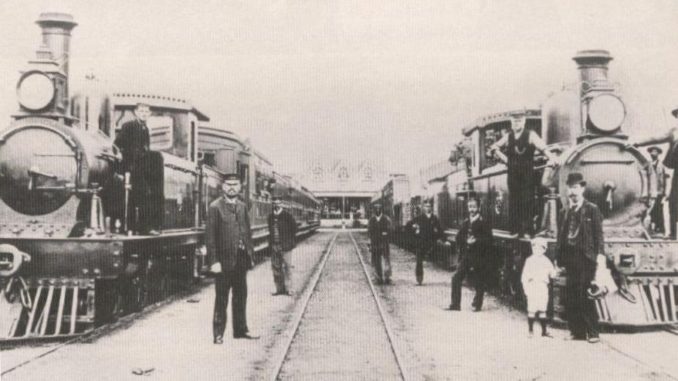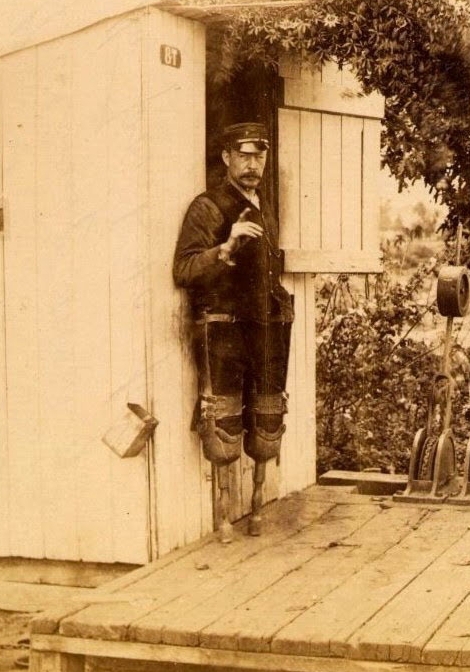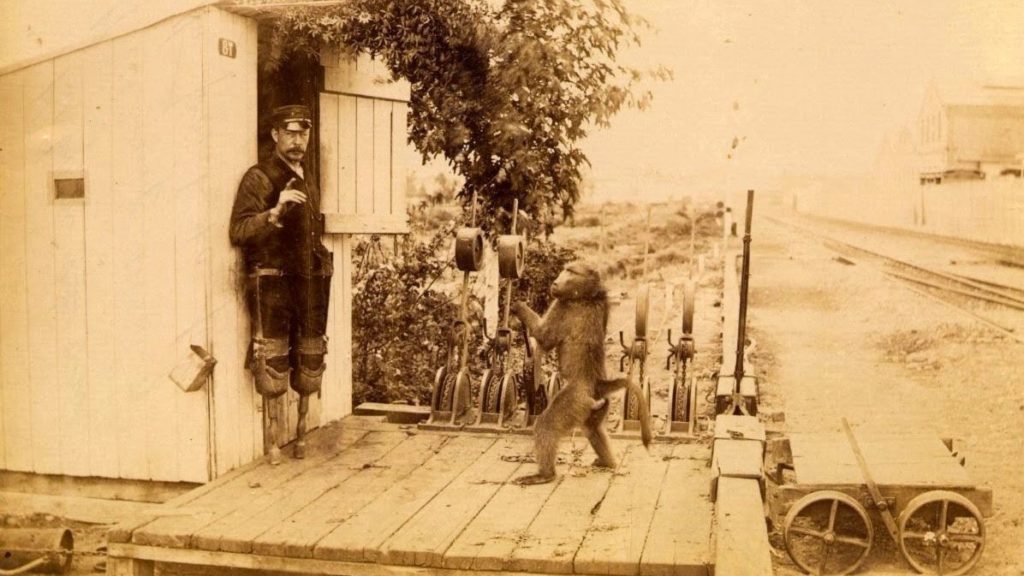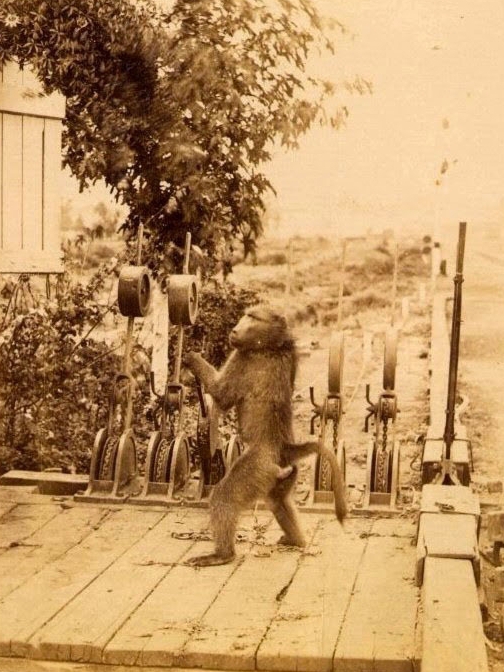
The Cape of Good Hope began as a Dutch colony in 1652. Colloquially, it was known as “Cape Colony” both under Dutch rule and from 1814 – 1910 under British rule. It now makes up a large portion of modern South Africa.
Although several private companies built short-haul railroads from 1859 onward, the colonial government formed the Cape Government Railways (CGR) in 1872 to hasten expansion throughout the large territory. This move facilitated the overland connection of Cape Town to Port Elizabeth as well as many smaller towns, and to the interior where diamonds had been found. It also proved instrumental in connecting Cape Colony to the Transvaal, where gold was discovered in 1886.
James Wide was employed by the Cape Government Railways, and earned the nickname “Jumper” for his skill and daring moving from railcar to railcar onboard moving trains. The inevitable happened in 1877, when Wide slipped and fell between two moving railcars. Both his legs were amputated below the knees. Determined to keep his employment with the railroad, Wide made simple prosthetics for his legs, and a hand trolley to help him get around. The trolley could be set on the rails so Wide could move down the tracks quickly.

The railroad agreed to keep employing Wide, but in a position that didn’t require as much mobility as his previous job. Wide was assigned to a switch yard in Uitenhage, about 20 miles northwest of Port Elizabeth. The new job required him to throw switches to move trains to different tracks and to communicate with locomotive engineers through track signals (lights and signs along the tracks). Engineers communicated back to Wide with the locomotive’s steam whistle: the number of short whistle bursts told the switchman which track they wanted to be on. Wise was able to do the job alright, but he was often too slow for the satisfaction of some engineers, and there were compliants.
One day at the town marketplace, Wise encountered Jack. Jack was a drinker. In fact, he drank too much but nevertheless was able, dependable, and willing to help Wide. All Wide had to do was provide Jack with a place to sleep, some food, and some drink.
Wide lived in a small shack next to the tracks, not far from the switch yard. He used his hand trolley on the rails to get back and forth between home and work. Jack could live at Wide’s shack, provided he pushed the hand trolley up the slope with Wide sitting on it. Jack was good natured and was happy to oblige. Once they reached the top of the slope, Jack jumped on the trolley and enjoyed the ride downhill to their destination, be it work or home. Jack also enjoyed the alcohol his new friend provided.
At work, Wide taught Jack how to throw the switches. At first, Jack looked to Wide for direction on which switch to pull and when. Eventually though, he learned what the locomotive whistles meant and could throw the correct switch without direction from Wide. In the nine years Jack worked as a switchman, he never made a mistake.
Jack also excelled at running the key to the coal bin out to waiting engineers in need of a fill up. Because Jack could do this much faster than Wide, the engineers were happy and the complaints about Wide’s slowness ceased. A new complaint, however, was soon registered with railroad officials. A society lady riding a passenger train through Uitenhage, was shocked and appalled that the switchman was a…

…BABOON!!!
The initial reaction of the railroad was to immediately dismiss both Wide and his offensive helper from employment with CGR. Wide pleaded with them to let him demonstrate Jack’s abilities. Happily, they were so impressed by the primate’s skills, they made him an actual employee of the company, with a salary that included a little pocket change and half a bottle of beer per week.
If you’re ever in the neighborhood, the Old Railway Station Museum in Uitenhage has Wide’s hand trolley on display, in case you want to see it in person. (Sorry, they don’t have a picture of it on their website, however the trolley is visible in the picture above: see lower right corner).
By the way, when Wide encountered Jack at the marketplace, Jack had been driving an ox cart. The farmer that had trained Jack how to drive a cart was reluctant to part with him, but Wide persuaded him to allow Jack to expand his career. Jack passed away in 1890 from tuberculosis after nine years of service with the CGR.

Question of the Night: What would you train a baboon to do?
